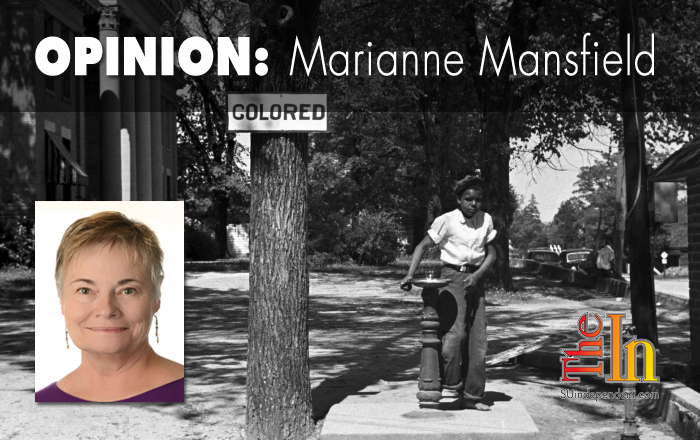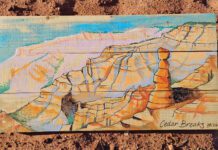
Written by Marianne Mansfield
If I were a canary being toted in a cage downward to the depths of the cavern of racial relations in America in 2014, I’d be flat on my back, wings splayed, desperately sucking air. The lethal scent of danger is overwhelming and omnipresent. Moreover, it’s an evil that has plagued our nation since its earliest days.
As a nation, we just don’t seem to be able to drain this cavern of its toxic fumes. They fester underground, swirling and permeating corners and crannies until an errant spark ignites them. Sometimes that spark comes from a bullet being fired at, and killing, an unarmed youth. Other times, the spark comes from an overactive response to such senseless killings. Although we seem to have an endless supply of canaries, we seem to make little lasting headway on this cancerous blight.
Each of us sinks our teeth into some part of the history of racism in America, and each of us draws back with a different taste of bile in our mouths. Whoever we are, what we experience is bitterness, something we’d all like to wretch out.
No one is right. Everyone is right. Everyone committed unpardonable sins. No one did. Maybe it is just some of us, and some of them.
Martin Luther King, Jr. did not start out preaching nonviolence, but in time, he became convinced that peaceful nonviolence was the strongest weapon in the struggle of all oppressed peoples against tyranny. And yet, he was murdered. Does that fact invalidate his belief in nonviolence? I think not.
“Perhaps non-violence is the difficult practice of letting rage collapse into grief, since then we stand the chance of knowing that we are bound up with others such that who I am or you are is this living relation that we sometimes lose. With great speed we do sometimes drive away from the unbearable, or drive precisely into its clutches, or do both at once, not knowing how we move, or with what consequence. It seems unbearable to be patient with unbearable loss, and yet that slowness, that impediment, can be the condition for showing what we value, and even perhaps what steps to take to preserve what is left of what we love.”
What is left of what we love when we set racism aside? Somewhere in there, I believe, there is that infinitesimal but diamond-solid grain of knowledge that we are, as Butler says, “…bound up with others such that who I am or you are is this living relation…”
This is not to oversimplify the abundance of monstrous dilemmas that are rampant in the state of race relations in our country today. The militarization of local police departments, the over-representation of black youth incarcerated, the zealousness of the press in turning every incident into the next national pastime (witness the live reporting from Ferguson, Miss.), and the willingness of some to see looting and plundering as an acceptable response to such tragedies.
My sense, though, is that as a nation, we will never be successful in addressing any of these, or all the others, unless we actively adopt a moral stance of nonviolent radical compassion. That is, we will not engage in hurtful speech or behavior, ever, in any form, against any other human being, because we need each other too much.
This is what that looks like. Imagine us lined up on two sides of the bottomless cavern called the racial divide in the United States. Each is a group of mixed races, classes, and genders, but we stand separately.
Our survival depends on free travel for all from one side of the chasm to the other. We need bridges.
Violence won’t build the bridges. Violence destroys them.
Hatred won’t build the bridges. Hatred denies our need for them.
Intolerance won’t build bridges. Intolerance ignores the chasm all together.
Rhetoric won’t build bridges. Rhetoric just clouds the air around us to the point where we can’t see much beyond our faces.
Let us consider the thought that we, the people, will never endure unless we find a method to span the abyss. What we need is over there. What they need is over here. Because what we need is each other. We are bound together. It is that diamond-solid grain that burns inside each and every one of us. We need each other to keep it lit.
So, what do we do? We learn the art of leaning toward those on the other side. Not just leaning, but leaning so far in that the only way I will survive is if someone from the other side reaches out for me. And I, on my side, will not allow anyone from the other side to fall. I will reach out. Bridges made of us holding each other up.
Human arches will be formed.
Architects recognize the arch as one of the strongest elements in building construction.
The human arch, underpinned by nonviolent radical compassion, could become an equally strong moral element in the ongoing construction of our future state.
We know it can work, because we have seen that it does.
What do you think? Want to reach out with me? Let’s try it together.




